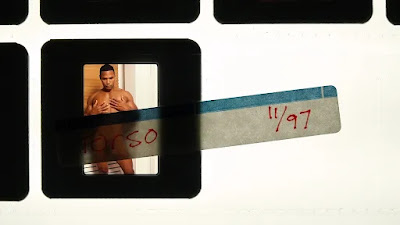on the chase
by Douglas Messerli
Ethel Doherty (screenplay, based on an
adaptation by Monte Price of Hugh Wiley’s The Spoils of War), A. Edward
Sutherland (director) Behind the Front / 1926
The title of A. Edward Sutherland’s World War
I comedy, Behind the Front, represents not only a military position, but
puns on what might be hidden behind the faces of its two comic heroes Riff
Swanson (Wallace Beery) and Shorty McKee (Raymond Hatton) while perhaps
suggesting their permanent physical positions with regard to one another.
Inevitably, the Sergeant hates these two men, who are put at the bottom
of every roster just as they are punished, jailed, and basically tortured
throughout the film.
As
in so many war films, the two previous enemies who don’t recognize one another
in their new uniforms, become more than close friends, and like Stan and Ollie
seemingly serve and sleep together, some of their physical humor bordering on
the bawdy.
Were
that their adventures as raucous as Laurel and Hardy’s! But there are a few
good moments, as when, spotting a man who, having left the trenches, is being
used for shooting practice by the Germans. The boys dare to leave their hideout
to save him, finally, after clumsy efforts, bringing him back into a nearby
trench. But when they see it is their highly hated Sergeant they attempt to
take him back to where they found him. At that very moment, US support soldiers
arrive to award the Sergeant for having saved not one, but two men. No
credit can ever be offered these two lowly privates.
At
several other moments, the duo find it utterly impossible to open a package of
Brown’s biscuits. They pull at it, beat it against the wall, punch it multiple
times, and even attempt to jump upon it from a height which only deposits it
into the ground. Even after a senior office pulls it open, they find the
biscuits themselves inedible. At the very end of the film when they discover
that their mutual girlfriend, Betty, has just married Percy Brown (Richard
Arlen), the creator of this diner’s delight and now highly lauded for having
volunteer millions of cases abroad for the soldiers, they take him aside and
prove him to be a bit of a wet biscuit.
Meanwhile, back at the war front, both receive letters from Betty, or at
least pretend to receive them. Betty herself eventually shows up at the local
entertainment center; and of course, they now realize that she has promised her
heart to both of them. Yet instead of fighting over her as you expect they
might, they behave in a queer manner, Swanson getting almost mushy over the
matter as he “aw shucks” admits “She likes you better, you’re so handsome,”
with McKee reciprocating by admitting “You’re bound to get her—you’ve got sex
appeal.”
The
boys have obviously bonded. And this time when Swanson approaches the French
female bartender, McKee is literally right behind him. Clearly the boys might
like a little action but seem more interested in getting some wine out of the
two women who run the local bar.
A
few minutes later, when a German plane attack occurs, while everyone else runs
for cover, Swanson goes looking for his buddy McKee, and when he discovers that
he’s down, blood apparently running from inside his uniform, he quickly tosses
him into the back of a truck, jumps in with him, and holds him close while
pleading to the gods to save his life. You half expect him to turn and kiss his
“buddy” in the manner of the flyer in William Wellman’s Wings (Wellman’s
poignant, truly gay work of 1927 didn’t come of nowhere) until he discovers
McKee is not shot, but drunk, and that the blood gushing from his heart was a
purloined bottle of wine.
Even if you wanted to overlook these bits of
evidence that their relationship has turned into something a bit more intimate
than soldierly comradery, the movie’s titles won’t permit it.
As
their unit moves closer to the front, a title card suddenly is flashed before
us suggesting their desire for the opposite sex, while hinting at their
willingness to perform their functions.
They
further prove their commitment to each other by taking on a dangerous duty to
reach the German line. They succeed, but get lost, finding themselves in a
German trench and soon after in a German armored tanker, imagining that are
saving the day only to discover, when they finally attack their own men, that
the Armistice had been signed, and their actions have endangered the peace
declared by both sides.
Even after they are sent home and fully take “care” of the biscuit boy,
the reality dawning upon them that in the old world they were the robber and
his enraged victim, both returning immediately to the chase, the filmmakers
themselves insist that they are now an eternal couple, perhaps more dependent
upon one another than Betty and her beat-up beau Percy Brown. The final title
card reads:
Los Angeles, November 4, 2023
Reprinted from World Cinema Review (November
2023).












